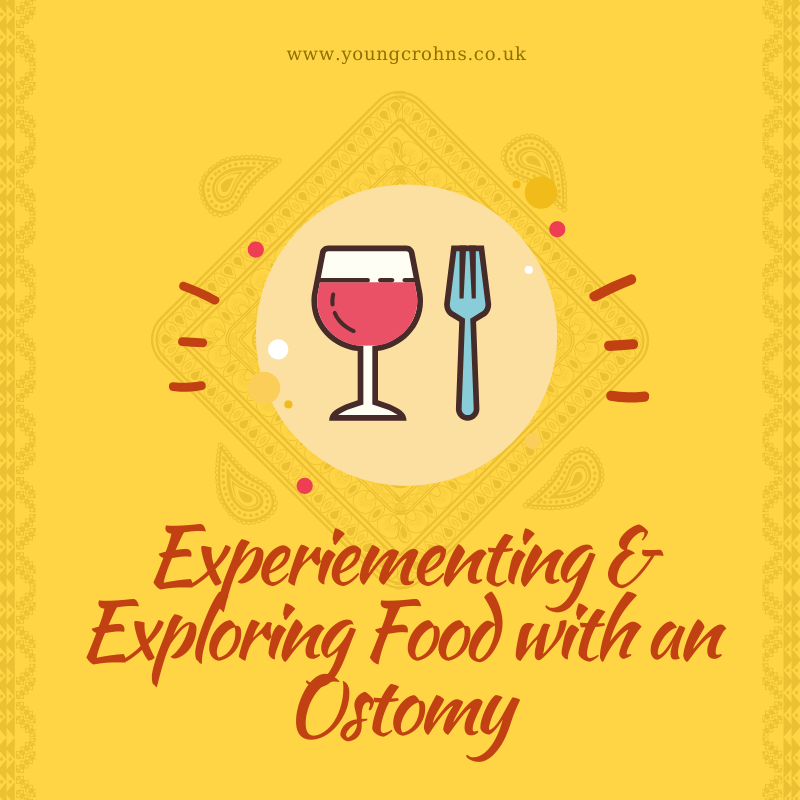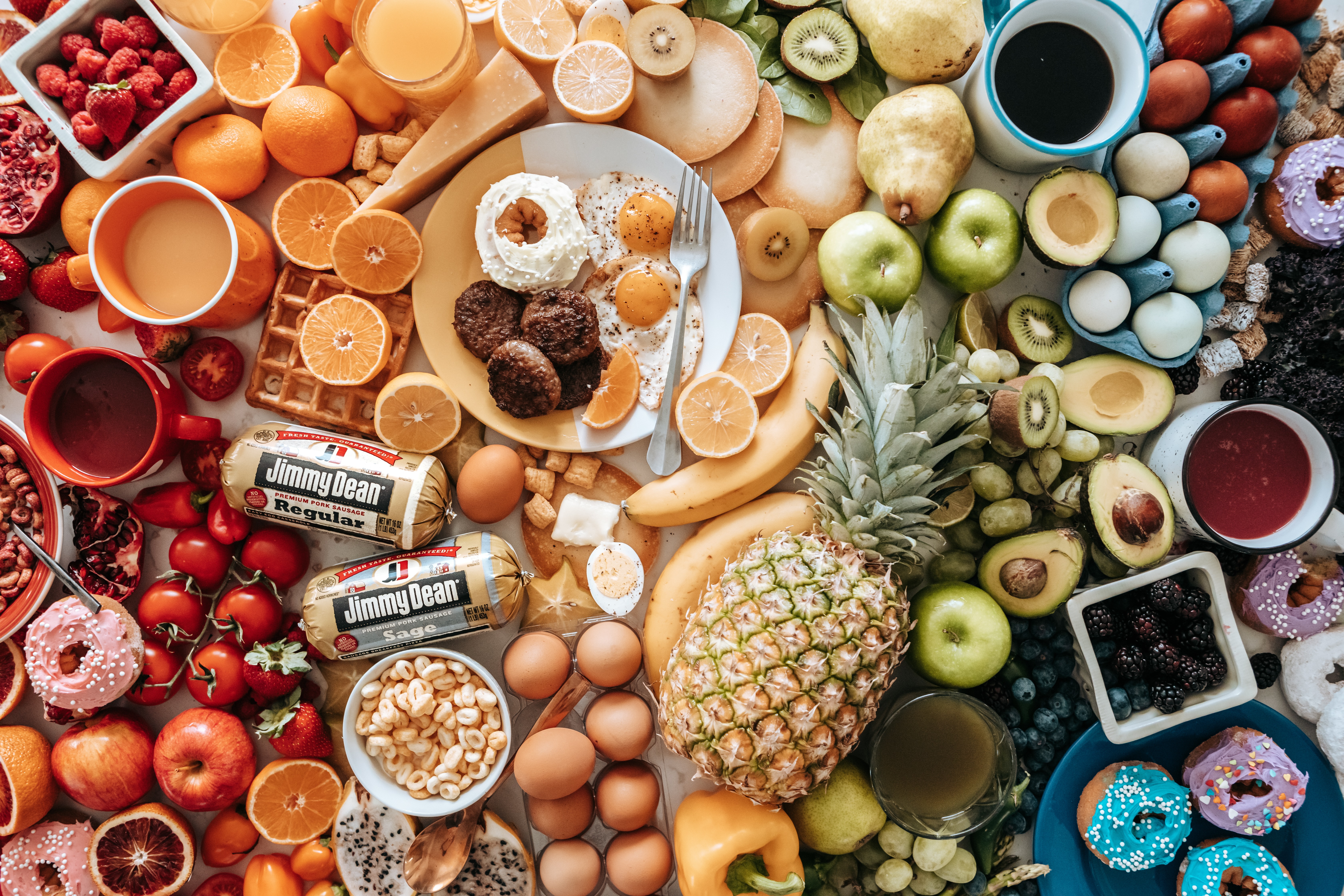
Experimenting and Exploring Food with an Ostomy
Inspired and a follow up to my 2016 post “My Tips for Eating with an Ostomy”
Disclaimer: This information is based on my own personal experiences. Please remember that each stoma and patient has different dietary constraints and experiences, and not all things will work for everyone. Finding your own path can take considerable time. If you are seeking dietary advice regarding your stoma, please contact your stoma nurse, dietician or medical team for further assistance.
“I miss food,” I told my partner, two days after I began TPN, ten days prior to my subtotal colectomy. It was an obtuse thing to say while getting essential nutrition delivered to my body through a vein in my heart. I missed the feeling of food in my mouth, the sensation and taste of food as well as using my teeth for chewing. It was a surreal period in my history with IBD.
It wasn’t just the fact that everything I ate had caused me severe and significant pain for almost two months, but I was going to have to adapt my life around something new after I woke up from surgery – I would have a stoma. This is a diversion of my bowel through my abdominal wall where it would allow waste to exit and into a medical device called a stoma bag. I could live this way for as long as needed; giving my digestive system time to recover from having its colon removed.
For many IBD patients, food is a very divisive topic. IBD is focused on the inflammation of the digestive system so naturally, it is commonplace to discuss food and diet. And for many, dietary changes can improve the quality of life in the short and long term. But it is important to note that while diet changes – here being from a regular healthy diet of balanced intake, and moving toward one of low fibre to reduce inflammation in the first instance – can be beneficial, patients can end up with long term nutritional deficiencies. And these can be devastating.

Food and its Effect on Immediate Post Op
When a stoma is formed, a portion of the bowel is removed. For most, it is the removal of the colon – the organ responsible for many digestive functions, including absorption of water and nutrients. So without one, food plays a huge role in what we deal with on a daily basis from our stoma.
Naturally, a fear around food can surround the prospect of stoma surgery. It can be tricky, in some cases, to not think about how food could hurt you like it has done for however long you have suffered.
I tried my first solid food three days after surgery. It might have only been cereal and hospital toast, but to me, it was elation. I was finally able to let more than water pass my lips. Getting used to chewing food again was a weird experience, as was realising that food would not be passing through diseased bowel. The possibilities of what I could now eat was huge. It was overwhelming and daunting, to be allowed the freedom once more, to eat and eat well again.
What goes in, must come out.
With a stoma, you see exactly what comes out of your digestive system. So you begin with small, predictable meals. Simple food that is easy to digest, so that your bowel can recover from the effects of surgery – being handled and manipulated – as well as an anaesthetic – which makes the bowel sleepy and takes time to ‘wake up’ and work again. This is advised for the weeks following surgery for several reasons:
- It helps you get into a routine with your digestion.
- It helps you understand what goes in, and how it comes out.
- It allows for ‘little and often’ so that weight gain is steady.

Moving away from Fear towards Experimenting
Once home, it’s easy to be more flexible with the food you can eat. I found myself enjoying the foods that I hadn’t had the entire time I’d been diagnosed with IBD because I now somehow ‘craved’ it. Without a colon, there will always been a need to self regulate your salts and sugars – your colon would normally adjust this for you – so you can find your appetite swinging from salty cravings to sweet ones. That is a strange sensation but you do get used to it, and its handy as a note towards dehydration.
I found myself cooking for myself more, wanting to use more fresh produce so that I could see what I was actually putting into my new plumbing, and experimenting with the things that used to cause me issues when I had a colon.
Here are my tips for you, if you want to explain your food horizons when you have a new or recently new stoma:
- Experiment – try things more than once. I found going back to meals after a while, because my body and mind were better at it a second time around. I can it ‘experience’ – I learnt alot from mistakes I made early on – but experimenting was key too.
- Try cooking favourite takeouts at home. Not only was this financially sound, it was also great to be able to have the freedom to enjoy my takeouts without the heavy oil, under cooked vegetables and low volume of protein – I could adjust everything to suit my pallet and new plumbing.
- Don’t be afraid of it causing you pain – you can always remedy that. At some point, something will cause you pain. It is a fact of life, with or without a stoma. With a stoma, the pain usually comes on a little quicker and is more intense as it causes more spasms in the small bowel and abdominal cavity. Eventually, things will get moving, hopefully without any medical intervention. If you do experience a blockage – from a partial to a full one – you can read more about that here.
- Remember to chew chew chew! A very important lesson you get taught from Day One with a stoma, and it’s probably a good lesson for everyone – to spend more time chewing food. It is amazing how such a simple piece of advice can be so fundamental to good digestion. Giving your digestive system the best start by having small boluses of food coming in, will always make the journey much smoother.
- Keep hydrated after a new meal with water or squash. Not only will this help with the transition of food through your system, but it also keeps you topped up with fluids. Without a colon, you will find yourself abit more susceptible to being dehydrated – meaning without adequate fluid balance in your body. If a meal is more salty than anticipated or expected, fluid can be pulled out of your system faster, so it’s always good to be hydrated. Like with chewing, taking keeping hydrated slowly – gulping down any fluid won’t do you any favours.

- Don’t let your previous experiences dictate your choices now. Sometimes we can be cautious because we have had bad experiences in the past. And while those situations are valid, it shouldn’t be a reason why you don’t find good and proper nutrition with a stoma. If anything, having a stoma is quite liberating when it comes to food.
Of course, there is alot of ‘common’ dietary advice for all estimates, with regards to what food can thicken output, what can loosen it, what can cause possible odour from the bag, what can cause and help with wind; as well as things that could possibly cause blockages. Armed with all this information, it can be overwhelming and pressurised to want to be a ‘perfect’ patient and not having any issues, but they happen! Understanding the mechanics of your new plumbing can help a lot with reducing anxiety and fear around food when you have a stoma.
I now eat a more varied and healthy diet than I did with my colon – I personally like to think my colon was just holding me back from being a bigger foodie than I was, but that’s my sense of humour! – including fibre and the ‘naughty’ foods that can cause blockages like nuts, seeds and popcorn. I accept the risks when I eat these things, but that is me. I have learnt to be more brazen with food and that only came after feeling comfortable, confident and happy.

Further Reading & Sources:
- SecuriCare – Reintroduction of Food After Stoma Surgery
- The Hillington Hospital NHS Foundation Trust – Healthy Eating and Management of your Ileostomy [pdf]
- United Ostomy Assosiation of America (UOAA) – Ostomy Diet Guidelines after Surgery Eating with an Ostomy [pdf]
- Eakin – Food and Drink with a Stoma
- Imperial College Healthcare NHS Trust – Nutritional Advice for People with a New Ileostomy [pdf]
- Coloplast UK – What food and drink you can have with a stoma [includes pdf on ‘Dietary Advice’]
Do you have any questions or queries? Or just want to share your own experiences?
You can leave me a reply here or leave comments via my social media accounts – on Twitter, find my blog page on Facebook and over on Instagram

If you enjoyed this post check out Stoma Life – Year Four, Fibre with IBD and The Digestive System Part IV – Digestion Myths & Ostomy Misconceptions



